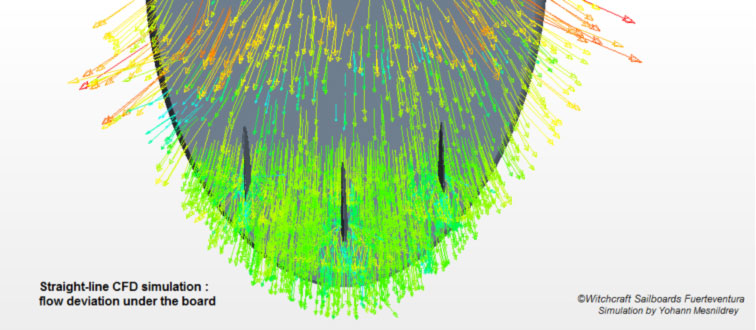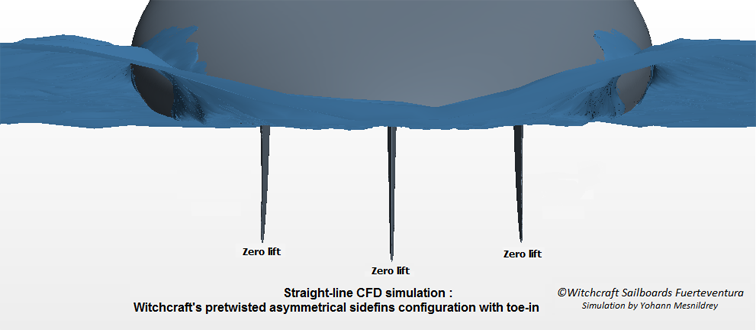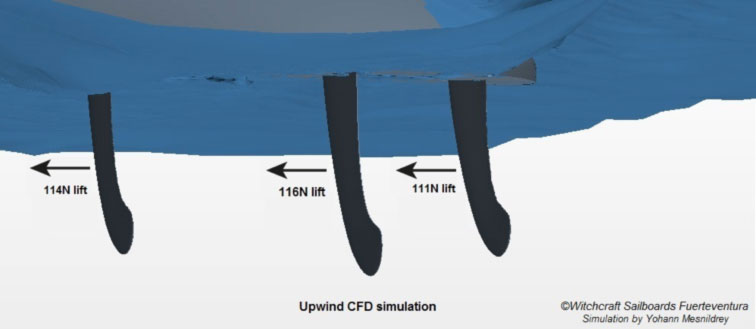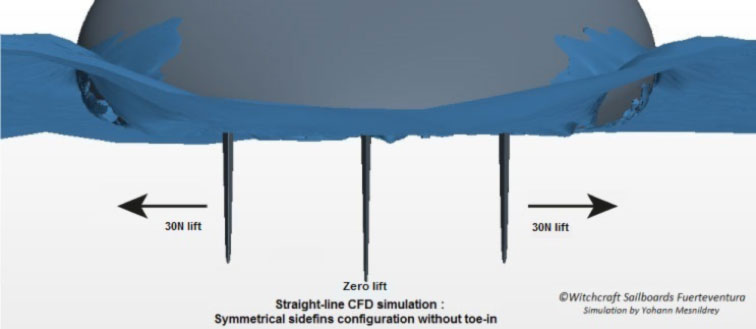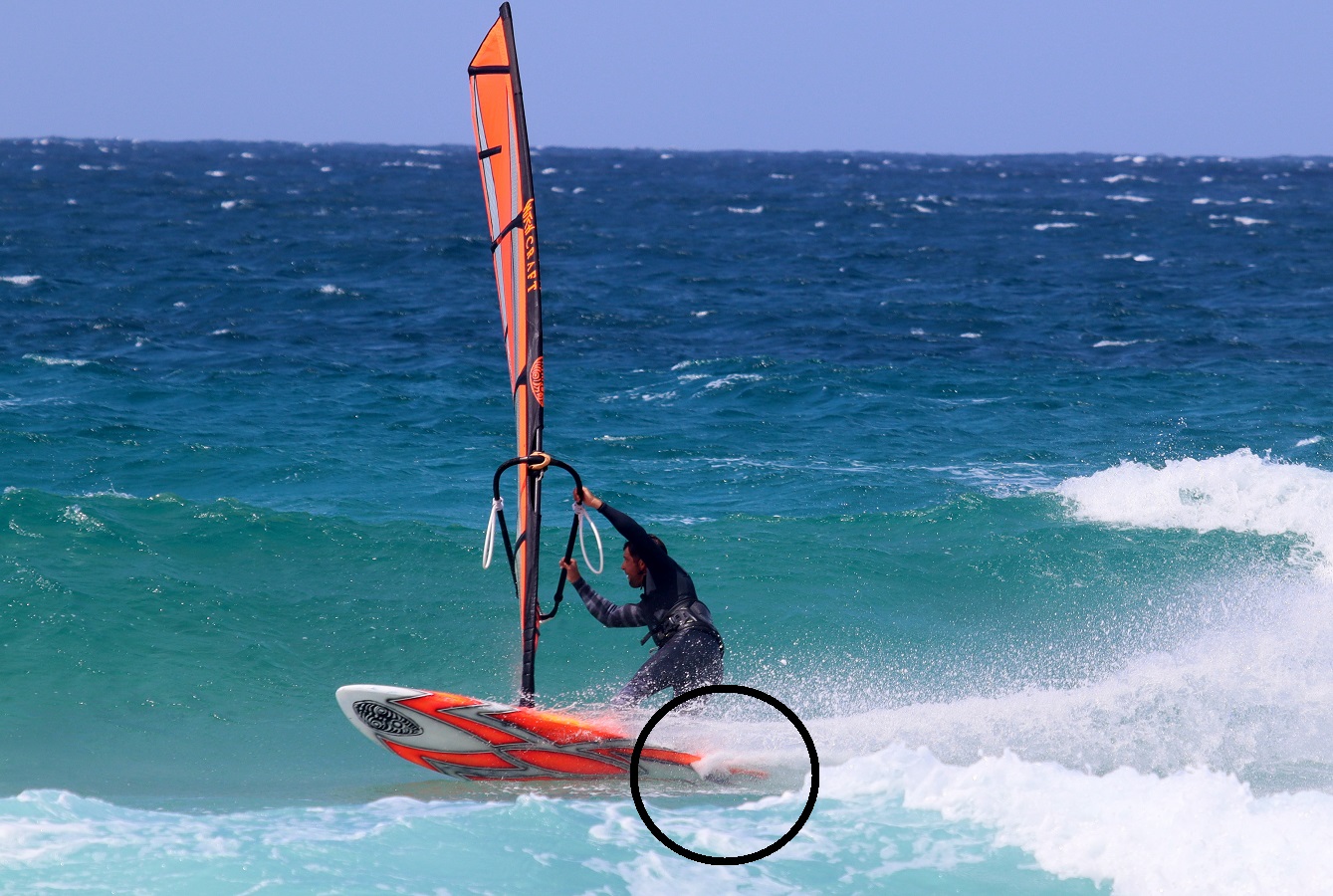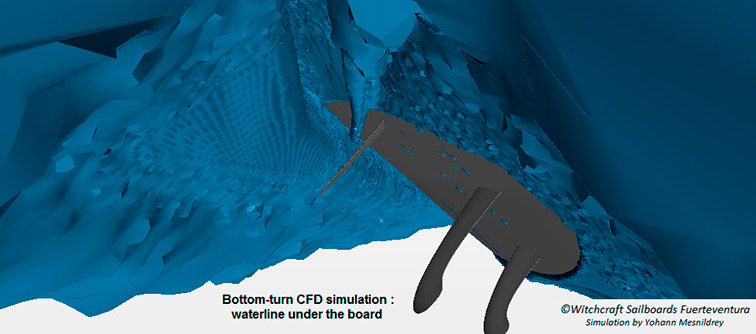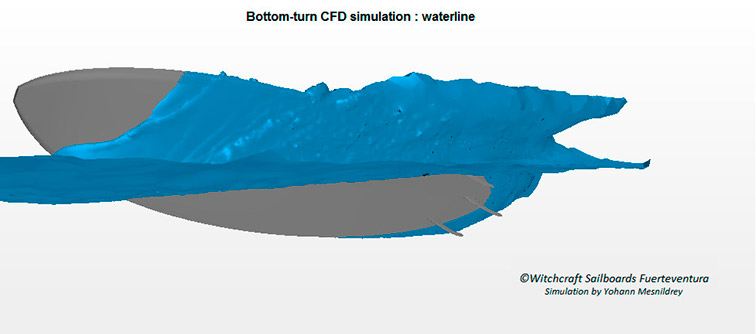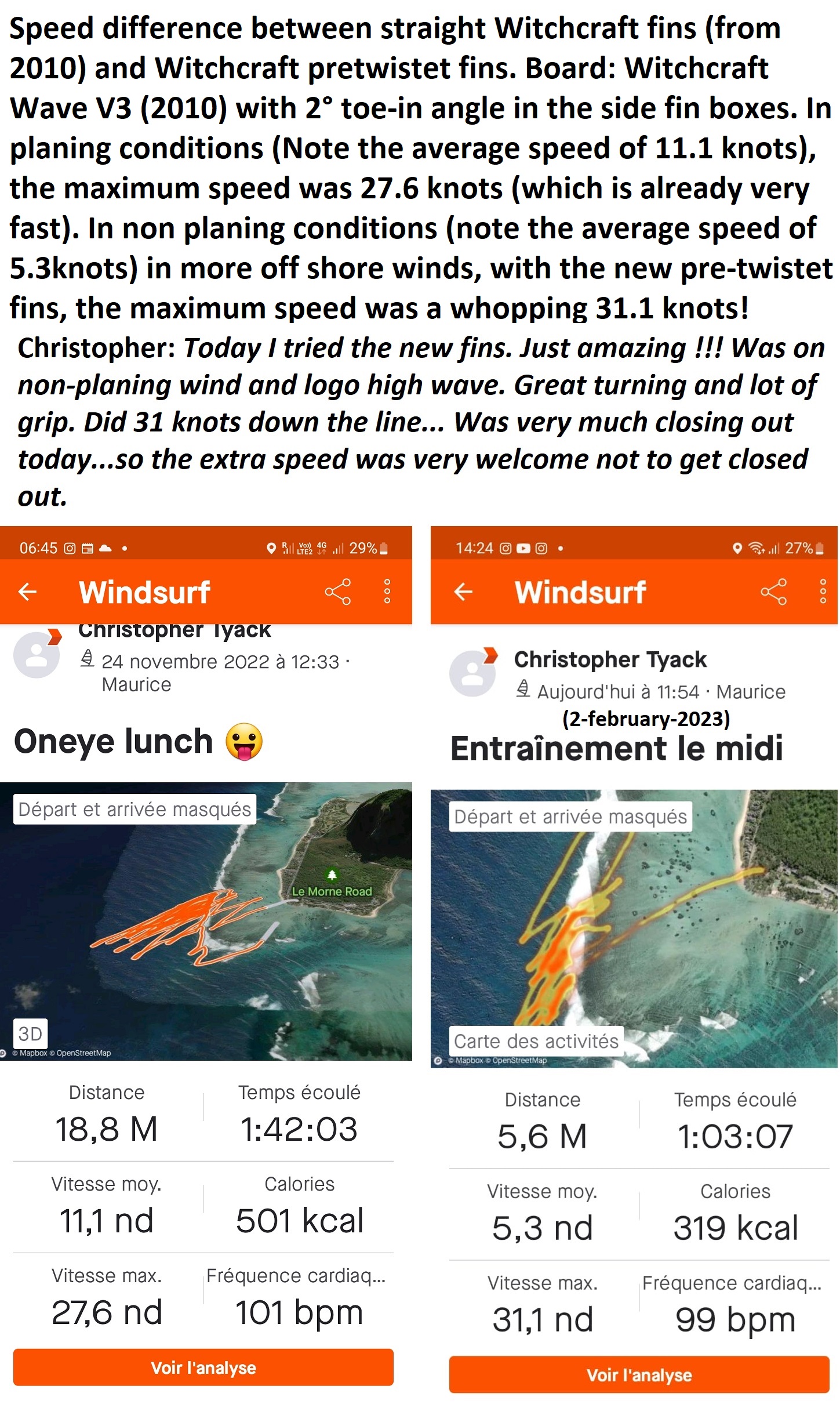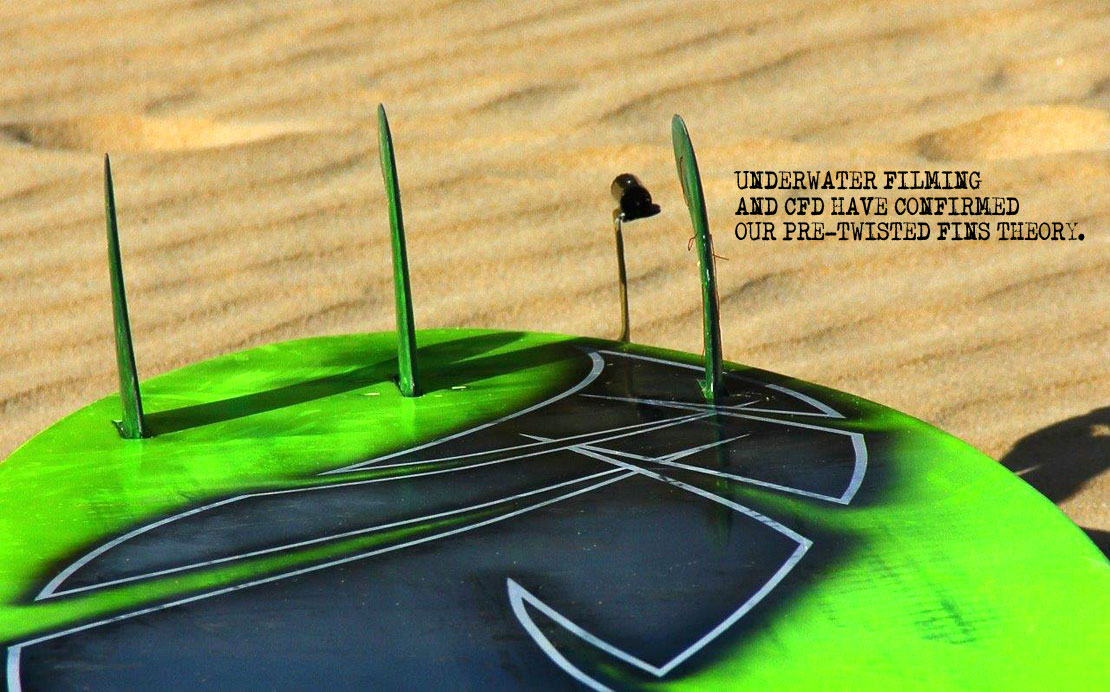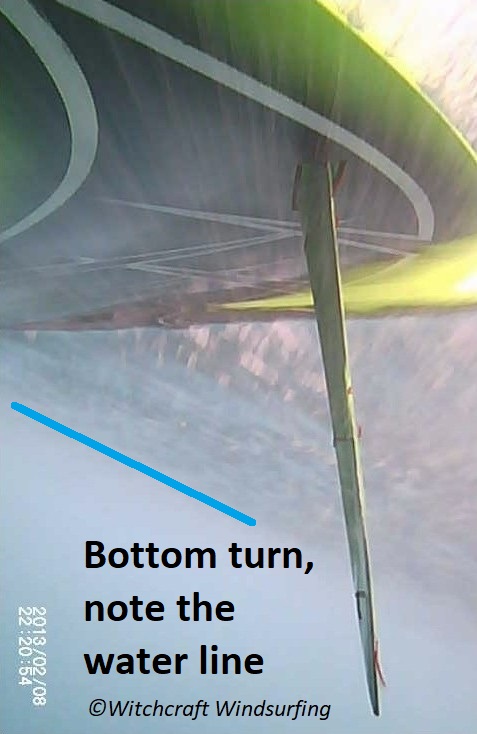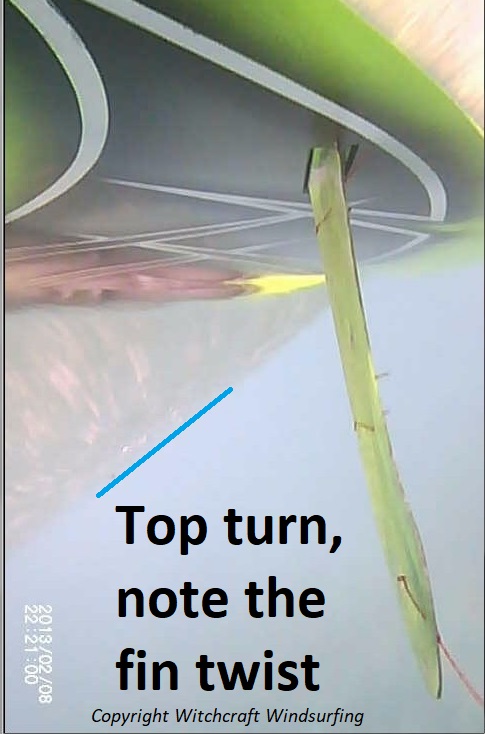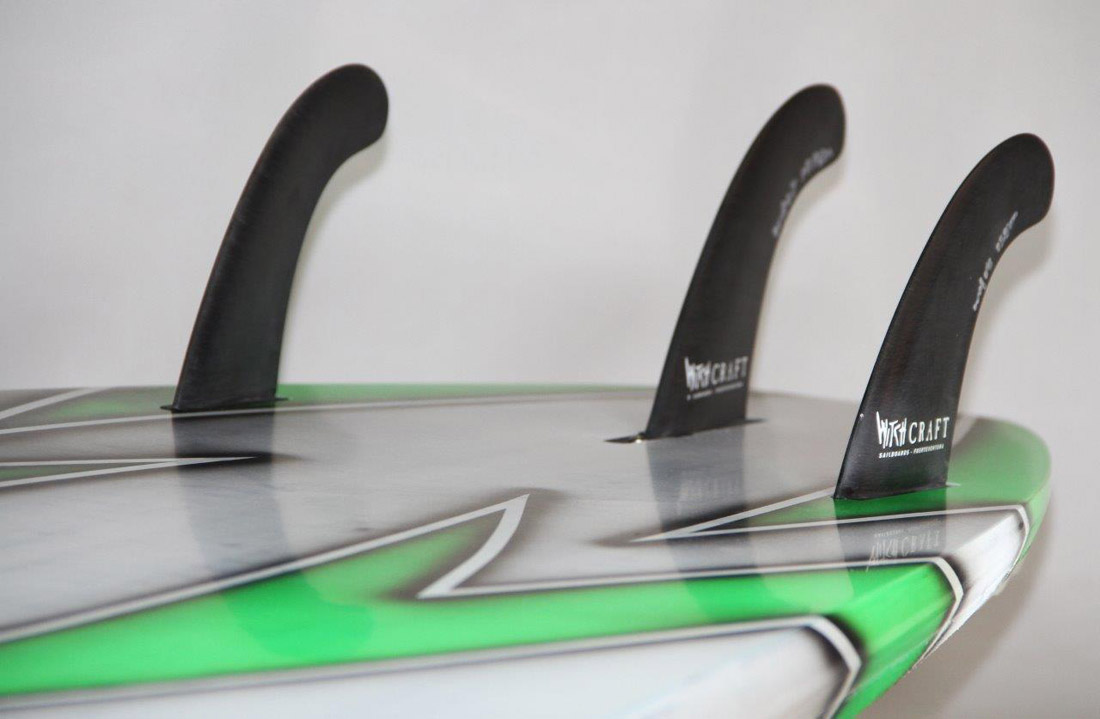Why TRI-FIN?
A Tri-fin or Thruster set up is the most versatile and best performing fin set up for most types of sailing but top speed or freestyle. When set up correctly, a trifin set up is the most adaptable, the most user friendly of all set ups. Faster than quads with minimum equal or better turning, much more control and predictable with minimum equal speed as twins. Having more fin area with less depth gives the best combination of upwind performance with control and maneouvrability.
Why Pre-Twisted Side fins?
In short: The board has an influence to the water flow underneath. The downwards pressure we put on the board with our weight causes the water to flow from the centre out to the rails. This effect is the biggest directly under the bottom and disappears going deeper. So even when going in a straight line, there is a difference in angle of attack to the fin between the side fin´s base and tip. So a side fin needs an angle pointing inward towards the nose (toe-in angle) directly at the fin base and then slowly need to twist to be pointing straight at the tip. Like the wing of a wind turbine has a twist or a windsurf sail needs to twist as there is less wind down below than in the top, also giving a difference in the angle of attack. A sail would perform horrible without twist. It is the same with fins.
It is just not visible so hardly any board or fin shapers ever even realised this effect existed, let alone investigating and doing research. As fins are small, a few degrees flow deflection may seem insignificant but remember water has a LOT more power than air and fins handle the same amount of power as a sail which is much bigger.
We at Witchcraft have been doing research to the water flow under the board since 2005, in practice and scientifically through various technologies. This is not easy but we managed to come a very long way through the use of the 4 way fin system with adaptable toe-in angles, CFD (computer fluid dynamics) under water filming, finite elements and off course practice testing in the most laboratory like wave riding conditions you can find: right here in our back yard on Fuerteventura.
See more information on this below.
Everywhere you hear people saying that tri-fins or quads are slow. That is not the case with the Witchcraft pre-twisted fin system. Often for normal types sailing they are even faster than a single fin due to the increased fin area with improved control=easier sailing.
Turning
Besides drag, also for the turning and wave riding behaviour is it very important to have the fins set up right. When the side fins do not have enough toe-in angle, without a side ways sail pressure, they deliver lift outward. A board turns because the tail is pushed out and the nose comes in. So with outward fin lift, it is the outer fin in a turn that helps the turn and the inner fin works against the turn. Then when the outer fin leaves the water in a turn, this results in the so called “straight lining effect” when the inner fin straightens out the turn. This is especially noticable when riding speeds go up and bigger sizes of side fins.
NOW
Over the years we have kept on developing and refining the fins. Asymmetrical profiled side fins for increased drive and grip. The right amount of rake to improve twist, which adds drive, grip and predictability. Now we are offering the latest version, developed for the use of colored G10 to have a strong, responsive, drivy fin with good flex but not too slippery to offer high precision so you can hit the lip where you are aiming for. Colored G10 is slightly softer than natural G10 and has the perfect flex.

